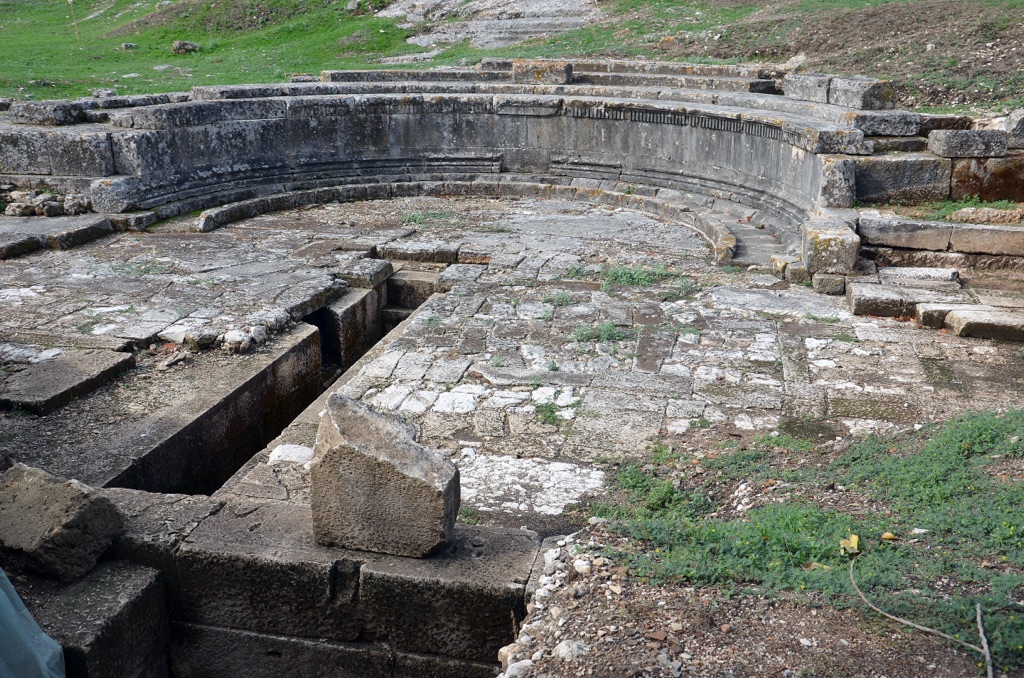Oricum, also known as Orikos, is an ancient city located in modern-day Albania. It played a significant role in various historical events, particularly during the Roman and Byzantine periods. The city’s strategic position on the Adriatic Sea made it a valuable asset for trade and military endeavors. Oricum is known for its ancient theater and the remains of city walls, which attract historians and archaeologists alike.
Get your dose of History via Email
Historical Background of Oricum
Oricum’s discovery traces back to the early 20th century, with systematic archaeological work beginning in the 1960s. The city’s origins are ancient, with evidence suggesting it was founded by the Euboeans, a Greek people from Euboea. It later came under Roman control and played a pivotal role in Caesar’s Civil War. Oricum was also an important site during the Byzantine era, serving as a defensive stronghold.
The city was built by the Greeks, as indicated by the architectural style of its remaining structures. Over time, it became a Roman colony, reflecting the empire’s expansive reach. The city’s construction showcases a blend of Hellenistic and Roman influences, evident in the remnants of its buildings and fortifications.
Oricum was inhabited by various cultures throughout its history. After the Greeks and Romans, it saw a Byzantine presence. Each culture left its mark on the city, contributing to its rich historical tapestry. The site was also a scene of significant historical events, including battles and sieges.
One notable event was the occupation of Oricum by Julius Caesar during the Civil War against Pompey. The city’s capture demonstrated its strategic importance. Later, it served as a naval base and a link in the chain of Byzantine coastal defenses.
Despite its historical significance, Oricum is not as well-known as other ancient sites. However, it remains a subject of interest for scholars who continue to uncover its past. The city’s ruins provide a window into the ancient world and its complex history of occupation and cultural exchange.
About Oricum
Oricum’s archaeological site reveals a city with a rich history and diverse cultural influences. The ancient theater, partially excavated, is a testament to the city’s Greek origins. Its construction methods and materials reflect Hellenistic architectural practices.
The city walls of Oricum, built using large stone blocks, showcase the defensive needs of the time. These fortifications were essential for protecting the city from invasions and played a crucial role in its military history.
Other architectural highlights include the remains of a Byzantine castle and a church. These structures indicate the city’s continued importance well into the Byzantine era. The castle’s strategic location and construction methods speak to the military significance of Oricum.
The building materials used in Oricum’s construction varied over time. Initially, local stone was the primary material, as seen in the city walls and theater. Later, as the Romans took over, brick and mortar became more prevalent, reflecting the architectural trends of the Roman Empire.
Despite the ravages of time, Oricum’s ruins provide valuable insights into ancient construction techniques and urban planning. The site continues to be a focus for archaeological study, revealing new aspects of its historical and architectural significance.
Theories and Interpretations
Several theories exist about Oricum’s purpose and significance. Some suggest it was primarily a commercial hub, while others emphasize its military role. The city’s location on the Adriatic coast supports both interpretations, as it could have served as a trade port and a naval base.
There are mysteries surrounding Oricum, particularly regarding its founding and the extent of its influence. While historical records provide some information, much of the city’s early history remains speculative.
Archaeologists have had to interpret the site’s remains to understand its past. They match findings with historical records to piece together Oricum’s story. This process is ongoing, with new discoveries shedding light on different aspects of the city’s history.
Dating of the site has been carried out using various methods, including stratigraphy and pottery analysis. These techniques help establish a timeline for the city’s occupation and development.
The interpretations of Oricum’s history are not static. As excavations continue and new evidence emerges, scholars revise their understanding of the city. This dynamic process ensures that Oricum’s past is continually being re-evaluated and enriched.
At a glance
Country: Albania
Civilization: Greek, Roman, Byzantine
Age: Founded in the 7th century BC
Conclusion and Sources
Reputable sources used in creating this article include:
- Wikipedia: https://en.wikipedia.org/wiki/Oricum

